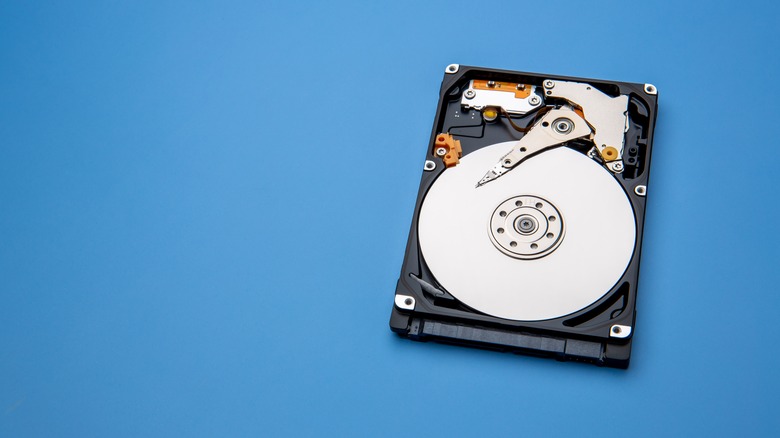What Actually Happens To Your Files After You Delete Them?
A good habit to get into is regularly cleaning out your computer's old or unnecessary files. Whether you're downloading pictures for work or have some old saved chatlog you don't need anymore, if it's not serving an immediate purpose and you won't need it later, just chuck it in the recycling bin, and then make sure to empty the recycling bin before you power down your computer for the day. This helps to both free up operating space on your hard drive and keep your files and folders clean and organized. Plus, it helps keep your important PC data right where you can find it.
However, something we often forget is that our hard drives aren't just magic boxes where our files float around in the ether. They're physical devices with writable discs and circuitry that had those files magnetically written to them. While it may seem like deleting a file just casually wipes it from existence, the process is actually a little more complicated than that.
Where your files go
Whenever you create or download a new file on your computer, the data of that file, including its actual contents and registry, is physically written onto your drive's hard disc. This is why your drives only have so much storage space because every little bit of data you accumulate needs to be physically written to them. The important thing about this process is that it doesn't go in reverse – data written to a drive can't just be "unwritten." What does that mean for your files, then?
When you drop a file into your recycling bin, and then empty the bin, the file isn't actually deleted in the literal sense. Rather, the file's registry is removed, making it invisible to a user, while also earmarking the space it was taking up for overwriting. Technically, that file still exists exactly as it was, and will continue to do so until a new file is created or downloaded and written to the same spot on the drive, overwriting the original one. Think of it kind of like marking a house for demolition – the house is still there until it's torn down and something new is built where it previously was.
Incidentally, all of this only applies to traditional hard drives. Solid state drives store data differently, so they fully delete data when ordered to do so.
Why this matters
For the purposes of just using your computer, this isn't that big of a distinction. When you delete a file, the space it was taking up is marked as available, which is why the available space on your drive increases. You can put something new there, even if the physical data is still present on the drive.
The fact that deleted data is still there is important to remember from both a safety and security perspective, though. In the former case, in the event you accidentally delete a file that you actually need, it can still be retrieved through the use of special programs. As long as the space hasn't been overwritten with new files yet, a data reconstruction utility can rebuild the registry and restore the file to its previous state.
This can also be used in a malicious way. Should a bad actor gain access to your computer, they could use these same data reconstruction utilities to snag sensitive information from files you thought were fully removed from your computer.
Generally speaking, simple deletion is fine for the purposes of basic computer upkeep. If you want to preserve sensitive data, though, you may be better off either encrypting it or using a data destruction utility to both delete and overwrite it to ensure it can't be recovered.


